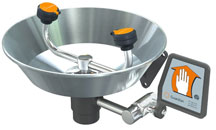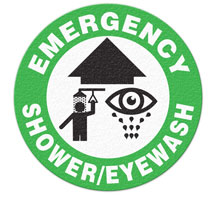| The Home page of ILPI's Safety Data Sheet (SDS) Resource, the leader in SDS information since 1995! | |
| The history and philosophy behind this resource. | |
| A curated collection of books and reference materials concerning Safety Data Sheets and closely related topics. | |
| Paste your plain text SDS into the SDS-Demystifier, and it will be converted into a hypertext-enriched document with links to detailed explanations of each key term. | |
| An extensive list of frequently asked questions about Safety Data Sheets including regulations, content, compliance, and more. | |
| A humorous take on Safety Data Sheet jargon. Fill in the blanks on our entry form to generate a personalized Unsafety Data Sheet to share with your coworkers. | |
| Since 1995, we've maintained this massive curated list of the best places to find Safety Data Sheets on the Internet. | |
| You are here! Way more than a glossary, this hypertext-enhanced resource covers hundreds of SDS-related terms and expert knowledge. Each entry includes both the SDS relevance and links to additional authoritative resources. | |
| Archived results of Safety Data Sheet related polls taken by some of our millions of site visitors | |
| The OSHA regulations behind SDS regulations, including the inspection guidelines and over 400 official interpretations letters under the Hazard Communication Standard | |
| Commercial suppliers of SDS authoring and management software as well as cloud compliance services. | |
| Commercial companies that will create SDS's for your specific needs as well as SDS translation companies. |

Safety signs, banners, and scoreboards? Get yours at Safety Emporium!
Definition
Conjunctivitis (also known as pink eye because the white part of the eye becomes pink) is inflammation (swelling) of the mucous membrane lining the eye (the conjunctiva). This is often accompanied by itching and watery eyes and sometimes blurred vision, eye pain and sensitivity to light.

Safety Emporium carries all kinds of eye/face washes, safety showers, drench hoses and more.
Additional Info
Conjunctivitis can be caused by physical injury, allergies, or chemical exposure, but is most commonly caused by bacterial or viral infection. These infections can be highly contagious and spread rapidly among schoolchildren or households. Bacterial conjunctivitis can be treated with antibiotic eye drops prescribed by a physician whereas viral conjunctivitis usually clears up on its own if strict hygiene is followed.
Hygiene procedures include making sure that people in the same household do not share towels or pillowcases, frequent hand washing, and discarding eye cosmestics. Never share eye cosmetics with other people.
Good places to pick up a case of bacterial or viral conjunctivitis are schools, hospitals, and daycare centers. Avoid touching doorknobs at such locations with your bare hands and always refrain from touching your eyes in such locations unless you have washed your hands or used hand sanitizer.
SDS Relevance
The Safety Data Sheet of substances that are known to irritate or affect the eyes will list this information in Section 11 (toxicological information).
Exposure to chemicals that irritate the eyes (such as lachrymators) can cause conjunctivitis or make existing bacterial or viral conjunctivitis worse. Seek medical treatment if the condition does not clear up on its own.
If you are not certain whether a chemical was splashed in your eye or you are suffering from an infection-caused conjunctivitis you should consult a physician immediately.
Protect yourself from fumes and vapors in the workplace by either eliminating them at the source, substituting other materials, or using engineering controls such as a fume hood or local exhaust ventilation. Goggles and safety glasses are ineffective against fumes and vapors, but a full-face respirator can give excellent protection.

Ensure a safe workplace with antislip floor marking signs from Safety Emporium.
Further Reading
- Pink eye (conjunctivitis) at MayoClinic.com.
- Allergic Conjunctivitis at familydoctor.org.
- Pinkeye (conjunctivitis) at KidsHealth.
- Conjunctivitis at American Family Physician, a detailed technical article with pictures.
- Conjunctivitis (Pink Eye) with a discussion of the various types at the US CDC.
- Pin Down 'Pink Eye' at Review of Optometry Online
- Conjunctival and Scleral Disorders at the Merck Manuals Consumer version (click on the Topics links to read more).
- Parts of the Eye at RIT.
- Pink Eye Types - Symptoms, Causes, Remedies at AllAboutVision.com